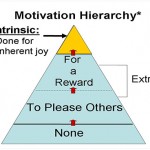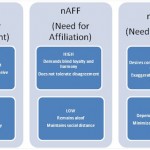What drives intrinsic motivation in employees?
Motivation translates itself into employee engagement and ultimately leads to better performance. Through motivation, individuals take action so as to reach their goals at professional or personal level.
The self-determination theory distinguishes between several motivation types, the ones discussed in relation to employee motivation being intrinsic or extrinsic. The topic of extrinsic motivation has long been discussed with references to employee performance. It is driven by external, tangible incentives such as bonuses or pay raises (mostly financial ones), which are meant to acknowledge and reward performance. On the other hand, intrinsic motivation comes from within. Since it is self-generated, it is different for each individual and linked to subjective and internal rewards.
At the core of intrinsic motivation lie several aspects, which are linked to the senses of accomplishment, self-fulfillment and mastery of a task. Kenneth W. Thomas argues, in his work Intrinsic Motivation at Work, that employee engagement is the outcome of rewards that arise from engagement itself. There are four aspects that foster intrinsic performance in nowadays working environment in which self-management plays an important role. These are:
- Meaningfulness – employees get the sense that a task is worth performing and has itself a strong meaning;
- Choice – employees are in the position of deciding how tasks are performed, which nurtures a feeling of ownership and fulfillment;
- Competence – employees make use of their competences in performing a task and doing well is a confirmation of their competency level, which triggers a feeling of pride and satisfaction;
- Progress – when made in the right direction, progress encourages and motivates employees, while the accomplishment of a task validates the decisions made and the competences employed.
Apart from these, according to Besley and Ghatak, intrinsic motivation can also be enhanced by some other factors such as internalized moral codes, social approval or cultural influence. In this direction, carrying out a task that would put their reputation or self-image at stake, for example, could motivate or demotivate employees, depending on the situation.
The study of intrinsic motivation in employees is a complex one and most of the time cannot be set apart from extrinsic motivation. One common assertion in literature is that extrinsic rewards have a negative impact on intrinsic motivation. Theories such as the Cognitive Evaluation Theory, The Attribution Theory, the Self-determination Theory or the General Interest theory studied the relationship between these two and the impact of the former on the latter. However, the belief that extrinsic rewards undermines internal motivation was not dismantled, but neither clearly supported by studies.
Motivation is rather a balance between intrinsic and extrinsic motivation. And, although intrinsic motivation varies from employee to employee, organizations have the possibility to create the environment that could enable individuals to find the internal motivation that would lead them to perform better and find the intrinsic rewards that would bring them internal satisfaction.
References
- Besley T. J., Ghatak M. (2014), Solving Agency Problems: Intrinsic Motivation, Incentives, and Productivity, London School of Economics
- Kenneth W. T. (2009), Intrinsic Motivation at Work: What Really Drives Employee Engagement, Second edition, San Francisco: Berrett-Koehler Publishers, pp. 53-88
- Ledford G. E. Jr., Gerhart B., Fang M. (2013), Negative Effects of Extrinsic Rewards on Intrinsic Motivation: More Smoke Than Fire, Volume 22 Number 2, WorldatWork Journal
- Moradi S., Garcia D., Andersson Arntén A.-C. & Archer T. (2014), Motivation as a Mediator: Internal & External Factors fostering Employee Engagement, 26th Association for Psychological Science Annual Convention. San Francisco, California, USA
Image source

Tags: Employee Motivation






